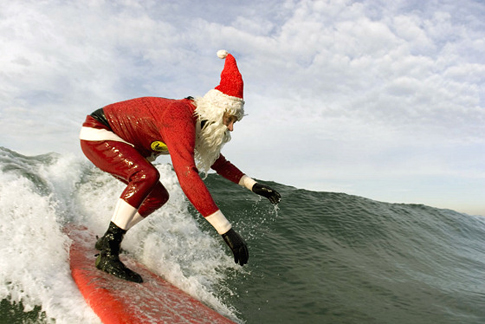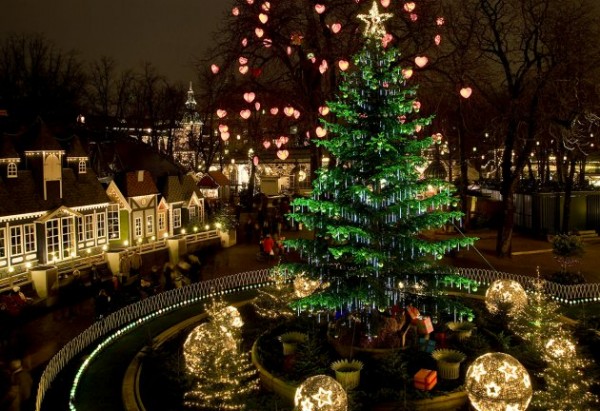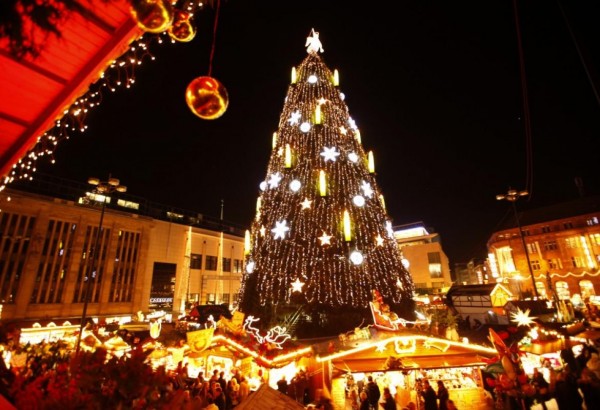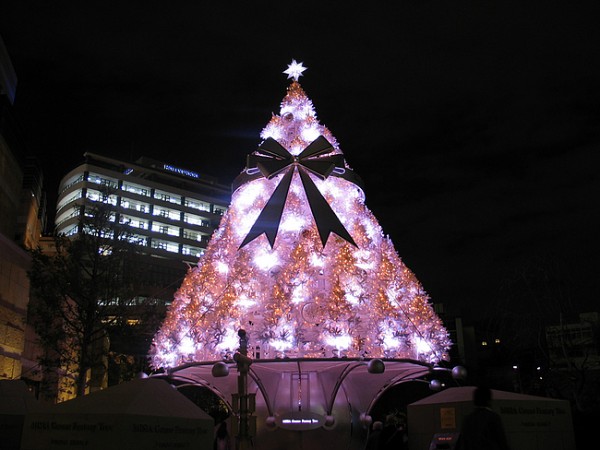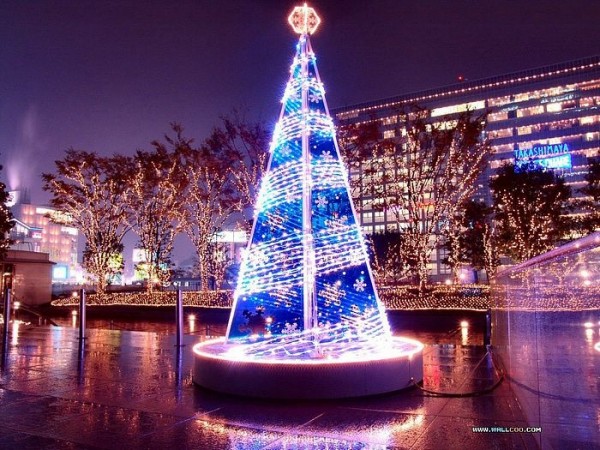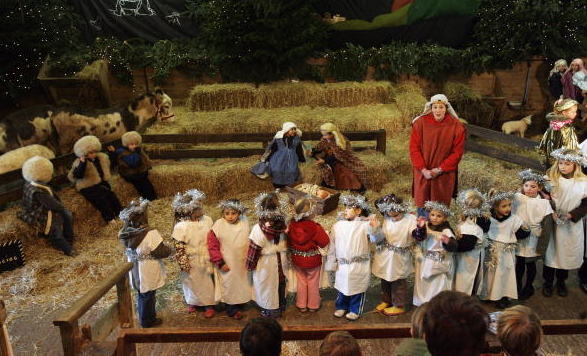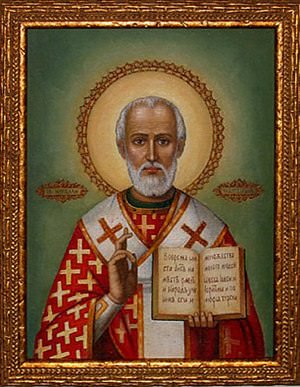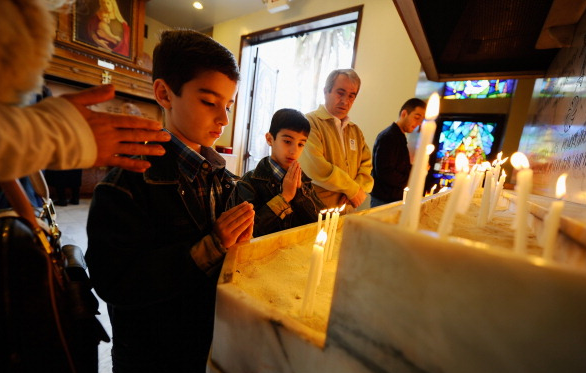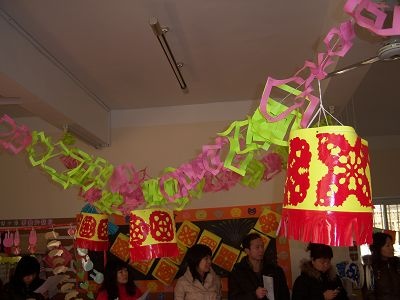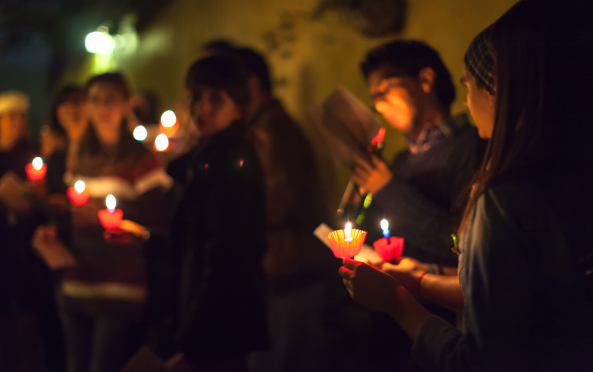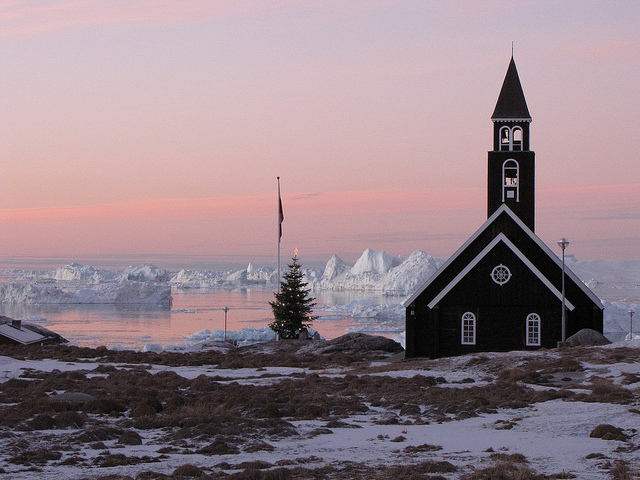For the prolific travelers among us, you may very well have celebrated Christmas in a variety of countries over the years. In some, you may have found some similarities to how you celebrate it in the states if coming from North America and the same could be said for European traditions which have their own unique customs depending on the country.
In the United States, children hang stockings by the fire, leave cookies and milk out for Santa Claus and religious families might go to midnight service on Christmas Eve and perhaps even on Christmas Day as well.
We put up lights, and in smaller towns, we’ll decorate our lawns with sleighs, snowmen, and reindeer. We watch children holiday special re-runs, and make hot apple cider and pumpkin pie. The family sits around a big table and we gorge ourselves on turkey and ham dinners, pot roasts and sweet potatoes. We love hanging bright bulbs on Christmas trees and aside from the ones at home in our own living rooms, we take great pride in observing the massive sized trees we put up in city courtyards, malls and parks.
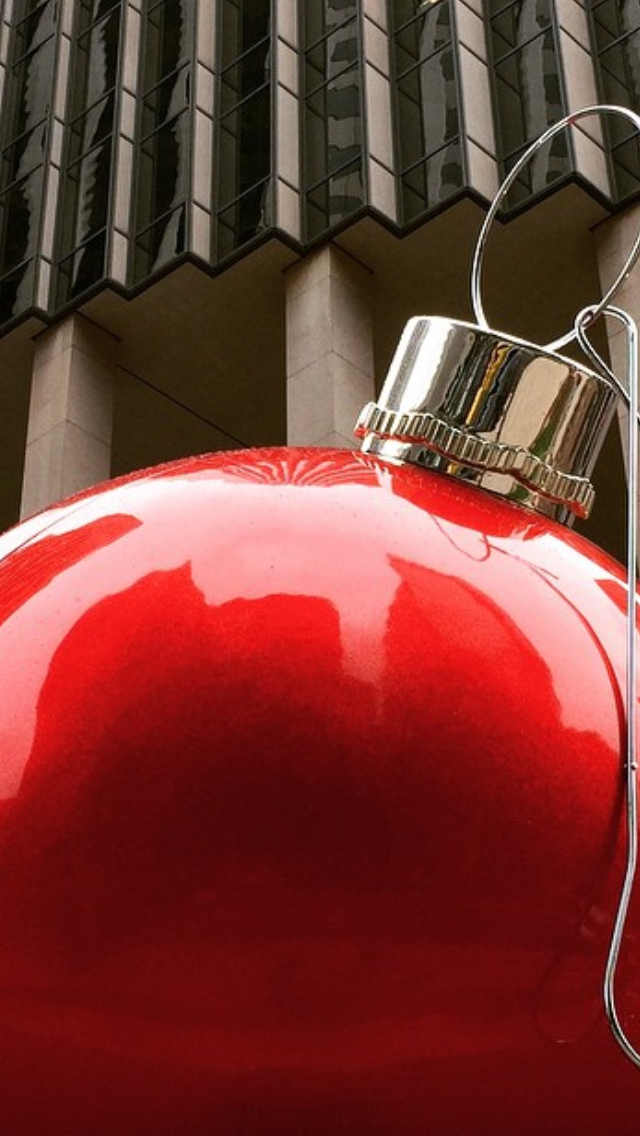
In other English speaking countries like Canada, the traditions are not that different than the states except that in the Eastern Canadian province of Nova Scotia, they focus on fir and pine Christmas Trees. A well known Canadian tradition is to send the biggest, best fir tree to Boston.
Down Under, the Aussies celebrate Christmas smack in the middle of a hot summer. While they might put up trees and celebrate the classic dinner with their family like we do in Europe, Canada and the states, they also party outside — think beach parties and barbecues and well, maybe even a Surfing Santa. And because they don’t have reindeer in Australia, think kangaroos instead.
I have spent several Christmas holidays in the United Kingdom — in the outside suburbs of London in the county of Surrey and Berkshire and once up north. In England, families hung Christmas cards along the side of their doors, we went caroling on one occasion and of course we ate up a storm and not just on Christmas Day but the day afterwards also — the celebration extends to what they refer to as Boxing Day which is December 26.
We had party horns and silly hats that we’d wear around the table and while gifts were part of the holiday, it was nowhere near as extensive as it is in the states where Christmas appears to be more and more about shopping, parties and trolling up and down aisles of a massive mall than it does about spirituality and togetherness. They do, however, take their dinners seriously — from roasted potatoes and veggies to stuffing, turkey, cranberry sauce and dressing.
In other northern European countries, the Christmas Tree is celebrated of course, but they have slightly different nuances of what they do and of course when.
Below is a Christmas tree decorated in and surrounded by gold in Copenhagen Denmark discovered on Pinterest.
Below, more gold influence on a Christmas tree decorated in Germany.
On the other side of the world in Japan, they celebrate Christmas a little differently, even though the tree is certainly part of it. A more modern style tree shown at the holidays in Tokyo.
The Japanese may celebrate Christmas in as big of a way if not more than the yanks except the customs are different as is their style — from decorations to the tree itself. (not the color and modern flair of the tree above and the cutesy Asian-influenced design in the tree below.
In Japan, Christmas in known as more of a time to spread happiness rather than a religious celebration. Christmas eve is thought of as a romantic day, in which couples spend together and exchange presents and in some ways, is more akin to Valentine’s Day in the states and the UK. In Japanese Happy/Merry Christmas is ‘Meri Kurisumasu’. And it’s written in the two Japanese scripts like this; Hiragana: めりーくりすます; Katakana: メリークリスマス.
In Costa Rica, people decorate their houses with tropical flowers. The nativity scene, called the Pasito or Portal, is the center of the display and is often decorated with fruit and flowers as well. People also add other models including houses and animals. Christmas wreaths are made of cypress branches and decorated with red coffee berries and ribbons. And, like in western European cultures, most homes, shops and public buildings are decorated with bright Christmas lights.
In Brazil, not unlike Costa Rica and other Latin cultures, the Nativity scenes are also popular. Many Brazilian Christmas traditions come from Portugal since Portugal ruled Brazil for many years.
Christmas plays called Los Pastores (The Shepherds), are popular, similar to what you’ll find in Mexico. In the Brazilian versions of the play, there’s also traditionally a shepherdess and also a woman who tries to steal baby Jesus. Many, especially Catholics, will go to a Midnight Mass service or Missa do Galo (Mass of the Roster). In Brazil, Santa Claus is called Papai Noel & Bom Velhinho (Good Old Man).
In Armenia, the Armenian Apostolic Church celebrates Christmas on January 6th when they apparently also celebrate the ‘Epiphany’ (which means the revelation that Jesus was God’s son). Epiphany is now mainly the time Churches remember the Visit of the of Wise Men to Jesus; but some Churches, like the Armenian Apostolic Church, also celebrate the Baptism of Jesus.
In Egypt, since only 15% of people are Christians, apparently few celebrate Christmas. Most Egyptian Christians belong to the Coptic Orthodox Church and they have some very unique traditions for Christmas. Christmas Day isn’t celebrated on the 25th December but on 7th January (like in Ethiopia and by some Orthodox Christians in Russia and Serbia).
The Coptic month leading to Christmas is called Kiahk and in celebration and good spirit, people sing special songs on Saturday nights before the Sunday Service.
For the 43 days before Christmas (Advent), from 25th November to 6th January, Coptic Orthodox Christians have a special fast where they basically eat a vegan diet. The don’t eat anything containing products that come from animals (including chicken, beef, milk and eggs). This is called ‘The Holy Nativity Fast’.
In Ghana, people celebrate Christmas from December 20 to first week in January with lots of different activities. Talk about diversity – apparently over 66 languages are spoken in Ghana and each language group has their own traditions and customs.
December is also the start of the cocoa harvest, which is huge in Ghana. On Christmas eve is when you’ll find people attending church services and they also drum, dance and sing. And, like many other cultures, children participate in a play or drama and there are nativity scenes.
Back in Europe, the people of the Czech Republic start celebrating as early as December 5 when children wait for St. Nicholas (Svatý Mikuláš) to arrive alongside both devils and angels. The children perform for this St. Nich usually in the way of a poem or a song and in return, they receive baskets of fruit, candy and chocolate. The rest of the presents are often opened on Christmas eve, not Christmas morning.
Christmas trees are not common at all in China where the focus is more on different kinds of decorations like colorful paper lanterns although they do also put up something referred to as a Tree of Light.
In China, only about one percent of people are Christians, so you’re less likely to see Christmas celebrations anywhere other than the major cities. Santa Claus is referred to as Shen Dan Lao Ren and to say Merry Christmas in Chinese, you’d say Sheng Dan Kuai Le or 圣诞快乐’ in Mandarin and ‘Seng Dan Fai Lok or 聖誕快樂’ in Cantonese. Another quirky factoid is that Santa is known as Sheng dan lao ren which means Old Christmas Man.
In Mexico, Christmas is largely a religious holiday and like other Latin cultures where catholic is dominant, there are plenty of Nativity scenes. Because it’s Mexico, there are also posadas, re-enactments of Mary and Joseph’s journey to Bethlehem. The final Posada on December 24 ends with a big Christmas dinner, a piñata and Midnight Mass. Like in the states, the kids open their presents on Christmas morning.
In Sweden, Christmas begins on December 13, with the St. Lucia ceremony. The celebration comes from stories that were told by Monks who first brought Christianity to Sweden.
On St. Lucia Day, the youngest daughter in the family dons a white robe with a wreath of evergreens and candles upon her head. Accompanied by her siblings, she serves her parents Lucia buns and coffee in bed. Two days before Christmas, families set up their Christmas trees. On Christmas eve, the mother of the house lights candles for all to carry on a precession to church.
In India, Christmas is quite small compared to other religious festivals and celebrations, largely because there’s only 2.3% of people who make up Christians.
One of the largest Indian Christian Communities is in Mumbai and they are mostly Roman Catholics. Many of the Christians in Mumbai came from or have roots in Goa. Midnight mass is a very important service for Christians in India, especially Catholics. The whole family will walk to the mass and this will be followed by a massive feast of different delicacies, (mostly curries) and the giving and receiving of presents. Churches in India are decorated with Poinsettia flowers and candles for the Christmas Eve Midnight Mass service.
In Haiti, French is the main language spoken o Happy/Merry Christmas is Joyeux Noël just like it is in France although some people speak Creole where it’s ‘Jwaye Nowe’. On Christmas Eve, children place their newly cleaned shoes, filled with straw under the tree on the porch and it isn’t uncommon to find houses lit up and open for visits until 3 in the morning.
In Greenland, people visit each other in the villages of Polar Inuits, where they celebrate and drink coffee and eat cakes. Traditional presents are model sledges, a pairs of polished walrus tusks, or sealskin mitts. Everyone in the village gets a gift and children go from house to house to sing songs, not unlike traditional caroling in Europe and the states.
On Christmas Eve Church Services are held and most people go to them, many in national costume. Some men wear the white anoraks which are worn on special occasions.
In the Philippines, formal Christmas celebrations start on December 16 when people go the the first of nine pre-dawn or early morning masses with the last mass being held on Christmas day. The masses held before Christmas are called the ‘Misa de Gallo’ or ‘Simbang Gabi’ in Filipino. Since its the only Asian country with so many Christians, Christmas is the most important holiday.
HAPPY HOLIDAYS TO YOU and YOURS!!
We wish you the happiest holiday season regardless
of where you happen to be on this
December 25 day, 2015.
Photo credits: The holiday bulb is from GFCorbett from Instagram, Santa Claus on surfboard from boardjoy.com. Denmark tree on Pinterest and Germany tree from ibtimes.com, First Japan tree from majiroxnews.com, second one from Pinterest, third one from JapanCrush.com. Costa Rica Matt Cardy from GettyImages. Brazil from www.stnicholascenter.org. Armenia is from Getty Images KevorkDjansezian. Egypt from Ed Giles (Getty Images). Czech Republic credit is from Matej Divizna (Getty). Mexico from Juan Jacobo ZanellaGonzalez (Getty). Sweden from Jann Lipka (Nordic Photos / Getty). India – Ele Rein/Moment (Getty) and Greenland is from commons.wikimedia.org.

Renee Blodgett is the founder of We Blog the World. The site combines the magic of an online culture and travel magazine with a global blog network and has contributors from every continent in the world. Having lived in 10 countries and explored nearly 80, she is an avid traveler, and a lover, observer and participant in cultural diversity.
She is also the CEO and founder of Magic Sauce Media, a new media services consultancy focused on viral marketing, social media, branding, events and PR. For over 20 years, she has helped companies from 12 countries get traction in the market. Known for her global and organic approach to product and corporate launches, Renee practices what she pitches and as an active user of social media, she helps clients navigate digital waters from around the world. Renee has been blogging for over 16 years and regularly writes on her personal blog Down the Avenue, Huffington Post, BlogHer, We Blog the World and other sites. She was ranked #12 Social Media Influencer by Forbes Magazine and is listed as a new media influencer and game changer on various sites and books on the new media revolution. In 2013, she was listed as the 6th most influential woman in social media by Forbes Magazine on a Top 20 List.
Her passion for art, storytelling and photography led to the launch of Magic Sauce Photography, which is a visual extension of her writing, the result of which has led to producing six photo books: Galapagos Islands, London, South Africa, Rome, Urbanization and Ecuador.
Renee is also the co-founder of Traveling Geeks, an initiative that brings entrepreneurs, thought leaders, bloggers, creators, curators and influencers to other countries to share and learn from peers, governments, corporations, and the general public in order to educate, share, evaluate, and promote innovative technologies.

